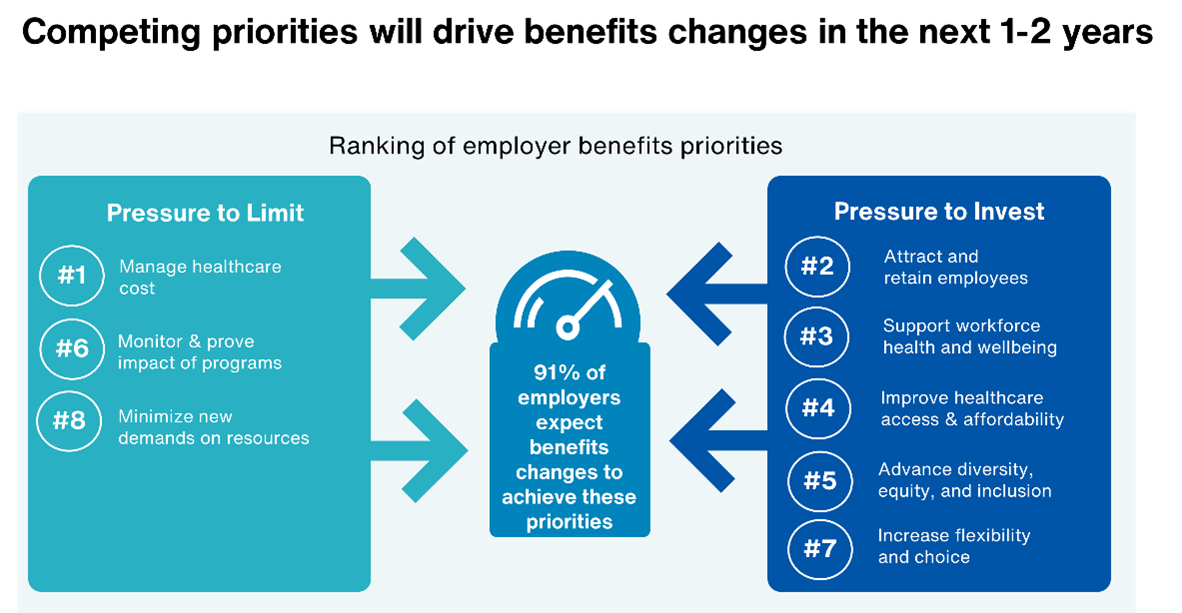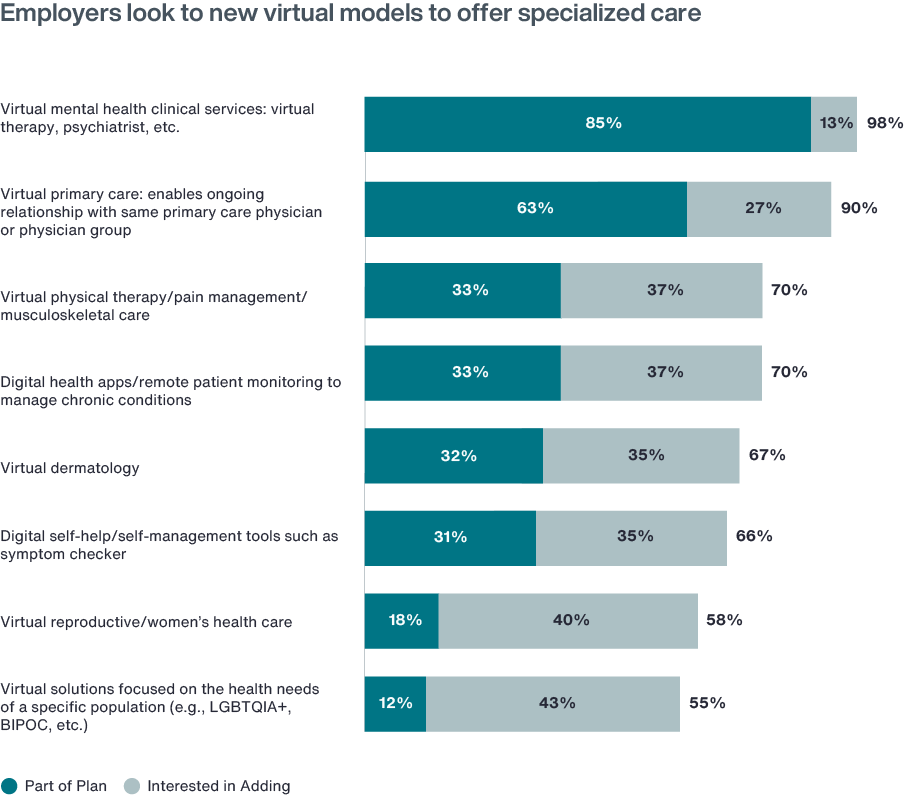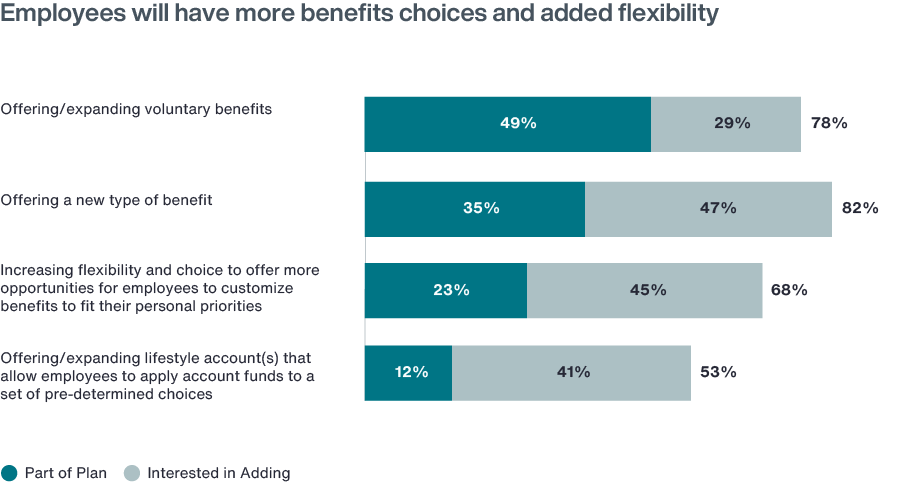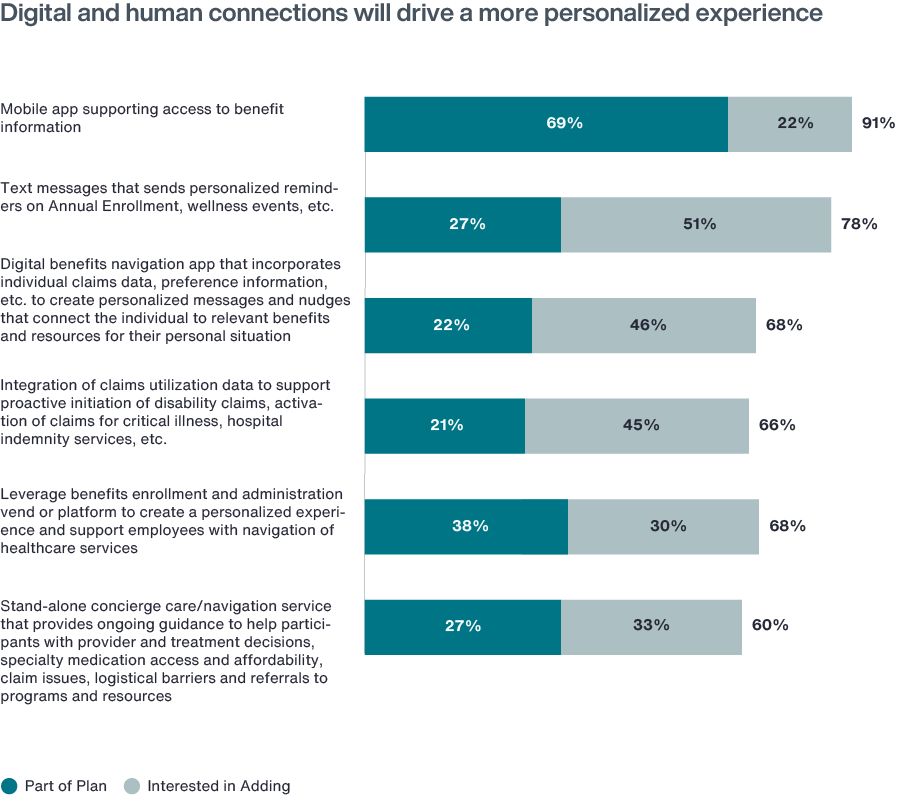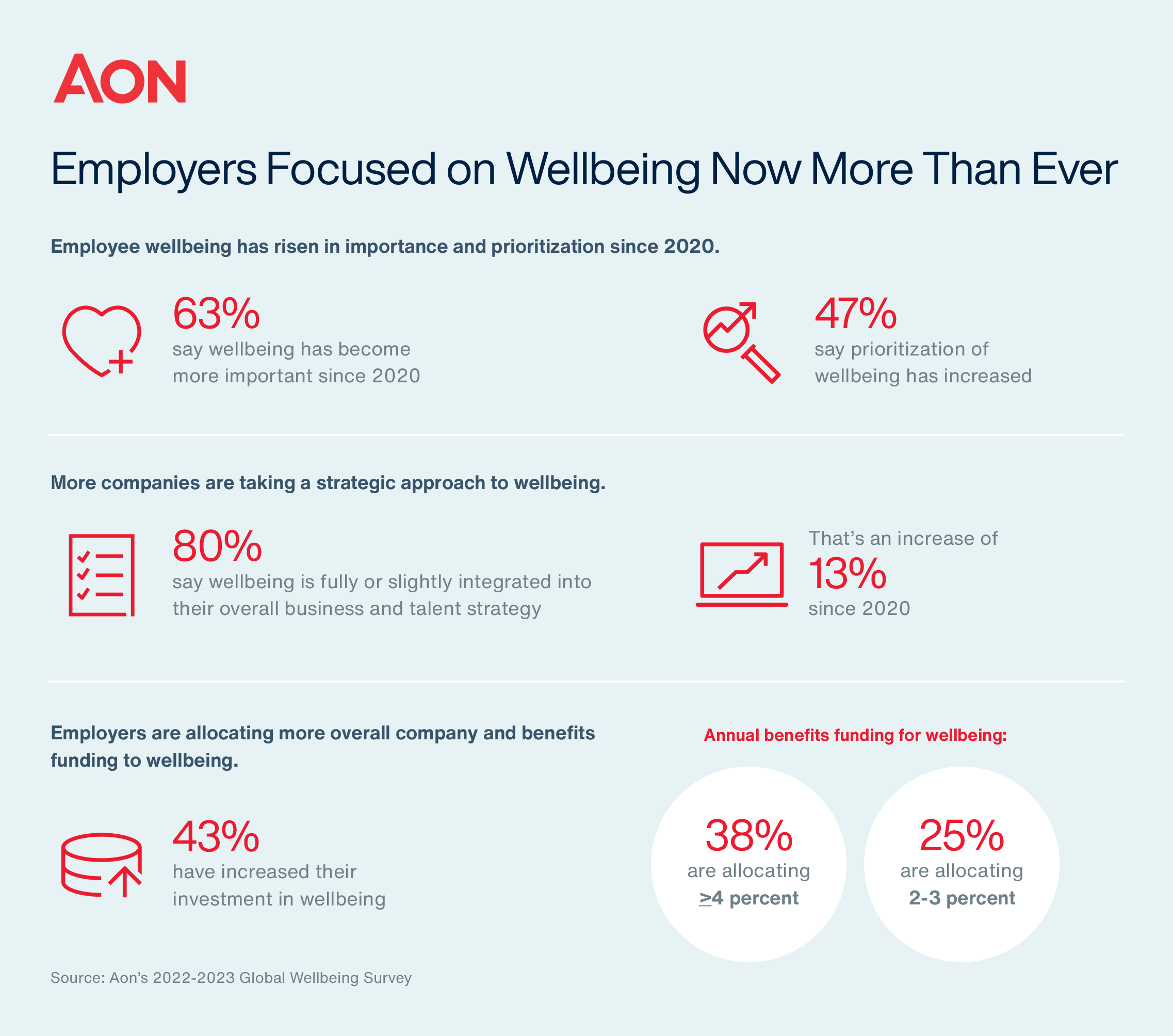In volatile economic times, it stands to reason that organizations demand value from their employee benefits. But beyond assuring that benefits are cost effective, employers are leaning into the notion that an effective benefits package can help advance their larger organizational objectives. Our survey asked organizations large and small from a variety of industries about the current benefits landscape, the trends they see in the near future, and how their own programs are performing. Their answers and insights can tell us much about the state of benefits.
Competing Priorities
We asked organizations to rank their priorities with regard to employee benefits, and the results fell into two broad categories. Under the category “Pressure to Limit” was the number one overall priority, managing health care costs, which comes as no surprise, since healthcare costs have risen Opens in a new tab consistently. The competing pressure to invest in benefit priorities like attracting and retaining employees, supporting workforce health and wellbeing and improving healthcare access and affordability is driving organizations to consider new approaches to managing healthcare cost.
Benefits are an important part of an organizations, Employee Value Proposition (EVP). Our survey found that nearly 60 percent of employers said benefits will increase in importance as a differentiator in their total rewards package.
Five Key Focus Areas
In addition to competing priorities, our survey found five key trends in the benefits space.
Move to value-driven healthcare strategies. There is a transition underway, with organizations moving away from consumer driven approaches that incentivize employees through a combination of high deductibles, savings accounts and consumer tools to seek cost-effective, appropriate care. Instead, organizations are using value-driven strategies that make it easier for participants to choose high-value care.
Expand equitable and inclusive support. Helping employees build resilience and feel a sense of belonging are important parts of building a sustainable working life. Whether it’s tackling the affordability of healthcare, ensuring equitable access to benefits, or closing health disparities, organizations recognize that employee benefits are a vital part of a Diversity, Equity and Inclusion Opens in a new tab (DE&I) strategy.
Next generation virtual care. Offering convenient, specialized and personalized care through digital and virtual channels is not only good for employees, it can encourage more preventive and maintenance care that lowers costs in the long run. Mental health services are an obvious fit, with 85 percent of companies saying they offer virtual mental health services, and another 13 percent interested in adding them. The next step in virtual care is support for chronic conditions and highly specialized services.
Flexibility and choice. Employees want to choose benefits that fit their needs, their lifestyle, their values and their stage of life. Whether it’s personalization that allows participants more control over their benefits or offering new or expanded benefits flexibility and choice are increasingly important as a way to make benefits more meaningful to employees.
Drive a more personalized experience. Making benefits easier to access and easier to use is key. Integration of claims data will help participants do things like automatically initiate disability or critical illness claims. Meanwhile, a combination of digital and in-person support can help individuals navigate the healthcare system, creating a personalized experience.
Wellbeing is an increasingly important topic for employers. To that end, Aon’s Global Wellbeing Survey gives insight on how companies around the world are handling this priority.
For more, see Aon’s 2022 Wellbeing Survey Opens in a new tab .
Benefits are changing. Far from being viewed as a cost center to be cut in uncertain times, they are seen as a valuable tool to attract and retain talent, foster a sustainable working life for employees, and meet organizational inclusion and diversity goals. How your organization navigates the new terrain can make all the difference.
To get the full report and find out how Aon can help, fill out the form below.
Download Report
Please complete the form below to receive your copy of the 2022 Health Survey. Fields marked with an asterisk (*) are required.


